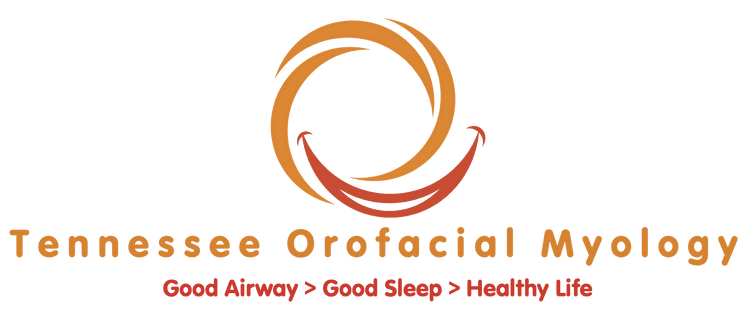Myofunctional Therapy
Orofacial myofunctional therapy is a highly effective physical therapy program used to improve breathing and correct the improper function of the tongue and facial muscles. Individuals with tongue-tie, sleep, breathing disorders predominantly mouth breathe (as opposed to habitual nasal breathers) and often develop maladaptive habits, and patterns of orofacial function that can impact various conditions.
Myofunctional therapy involves the strengthening of the tongue and orofacial muscles by teaching individuals how to properly engage those muscles. Therapy can also help retrain poor oral habits through a series of facial, and tongue exercises and therapy techniques. After a knee or back injury or surgery, physical therapy helps to regain and optimize natural function and mobility. The muscles of the tongue are no different in that respect. They function together as an organ, a complex system of muscles and tissues, to facilitated breathing, eating, speaking, etc. When the oral and facial muscles do not work in a coordinated and intended pattern, this may affect facial skeletal growth (maxillofacial development), sleep-disordered breathing (including snoring and sleep apnea), dental problems (teeth grinding, orthodontic treatment), forward head posture, temporomandibular joint dysfunction, neck/shoulder tension, speech, facial aesthetics and more.
Myofunctional therapy can help:
· Promote exclusive nasal breathing
· Promote ideal oral resting posture (lips together, tongue on the roof of the mouth)
· Reduce the symptoms of sleep disordered breathing (such as snoring), and improve mode of breathing – leading to balanced moods, clear thinking, increased energy and healthy immune systems!
· Support the stability of orthodontic treatment, and potentially prevent orthodontic relapse
· Identify and rehabilitate maladaptive compensations; including dissociation of tongue-jaw dependency, and neck engagement with tongue movements during chewing, talking, swallowing, etc…
· Become aware of, and repattern, noxious habits (thumb sucking, nail biting, and other habits)
· Adjusting functional patterns by addressing the need of muscles re-education after surgery (improved tongue-mobility and function)
· Pre and post-operative myofunctional therapy is a requisite to our functional frenuloplasty protocols which honor the changes that occur during a tongue-tie release and prepare the body for acceptance and optimal healing post-treatment. Our group is highly active in clinical research and are all deeply committed to doing anything that we can to promote optimal outcomes after surgery.
GOALS OF MYOFUNCTIONAL THERAPY
1. Identify, prevent, and treat disorders of muscle functions of the face and mouth
2. Replace negative facial and oral habits with proper functions of the tongue, lips & facial muscles
3. To help better understand the importance of proper tongue position (roof of the mouth)
Note: A low tongue position can contribute to improper muscle function and lead to airway obstruction.
The Importance of Pre/Post Operative Therapy Exercises as Part of a Successful Frenectomy Procedure
Much as physical therapy helps healing following surgery, myofunctional therapy helps to make tongue-tie release surgery successful. The surgery provides an increase in range of motion, but the tongue does not necessarily know the correct movement patterns to support the stomatognathic muscle functions (involving comprising teeth, jaws and associated soft tissues.).
Without such therapy, the incorrect swallowing, compensatory postures and sub-optimal breathing habits remain, which can eventually lead to the relapse of the pre-operative sleep disordered breathing and other disorders that necessitated treatment in the first place. Whereas repetitions of the correct patterns entrain behavior which helps to establish jaw stability and proper tongue resting position. Also, with therapy, the area to be operated on is much better defined when muscles are toned which makes the surgeon’s job easier. After surgery, myofunctional therapy exercises are necessary in order to correct and re-pattern the swallowing, chewing, speaking and breathing patterns acquired as a result of the tongue-tie.
